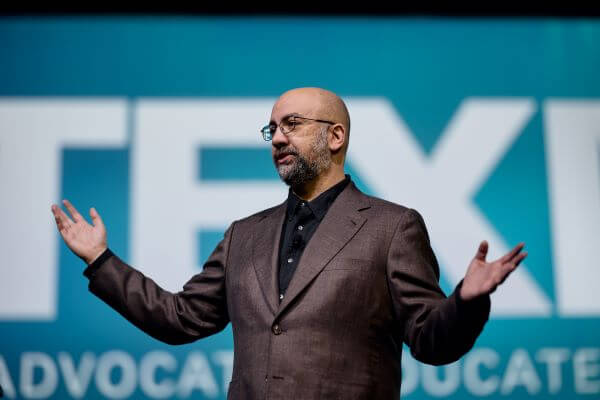
The best way to reduce health care costs for physicians and especially patients? Cut out the middlemen: pharmacy benefit managers (PBMs).
During his talk at Friday’s opening session of TexMed 2025 in San Antonio May 9, Dallas emergency radiologist Alex Oshmyansky, MD, admitted his specialty may be more inexperienced with the physician-patient relationship when it comes to prescribing medicine. But another physician’s experience gave him the impetus to attempt to disrupt the price structure PBMs use for prescription drugs – a path that eventually led him to establish a company that could reduce health care costs for physicians and patients alike.
A pulmonologist research colleague told Dr. Oshmyansky he had two patients die over the same weekend from not being able to receive the same medication. Bosentan had a PBM-negotiated list price at the time of $10,000 for a month’s supply despite it being a generic drug, according to Dr. Oshmyansky. The patients “got caught up in the red tape” and passed away waiting for approval.
“That got me kicked off on my journey,” Dr. Oshmyansky said during the CME-eligible discussion. “I got together with some infectious disease doctor friends of mine, and we naively said, why don't we start a nonprofit pharmaceutical company?”
Alex Oshmyansky, MD, says PBMs were initially a good idea in the 1970s to help pharmacies and insurance companies process prescription paperwork. But their work today is highlighted by a lack of transparency, especially in how PBMs negotiate drug prices and rebates with manufacturers, he says.
“We as a country spend [three times more] on pharmaceuticals than any other comparable nation,” he said. “Why are our market prices higher than Lithuania’s? We want to solve that.”
His nonprofit pharmaceutical company “failed spectacularly,” he said, but eventually Dr. Oshmyansky converted it to a for-profit, public-benefit corporation instead that would allow them to pick up enough investors to make it sustainable. His funding break came, when “on a whim,” he decided to send investor and entrepreneur Mark Cuban a blind email, titled “Cold Pitch,” in 2018. Mr. Cuban responded and invested a small amount which grew exponentially in the next four years.
They established the Mark Cuban Cost Plus Drug Company with the goal of reducing generic drug prices through a “cost-plus” pricing model. The strategy seeks to lower prescription drug prices by limiting charges to just the manufacturing and distribution costs, along with a modest 15% markup fee, a $5 fee to pay a pharmacist to fill the prescription, and a $5 fee for shipping and handling to cover overhead expenses.
As Dr. Oshmyansky considers pharmacy vending machines in Dollar General stores and dispensing medications at physicians’ offices solutions to allow patients easy access to prescription drugs, the main focus of his company continues to be disrupting the PBM-manufacturer relationship to drive down health costs.
In 2024, an interim staff report from the Federal Trade Commission suggested PBMs may be driving up prices to increase their own profits.
“They’re taking a very simple transaction … with all of these complicated back and forth financial maneuvers,” Dr. Oshmyansky said. “There’s money going back and forth with all these subsidiary companies. That is, in my mind, at least 30% of costs spent on health care.”
Read Texas Medicine Today for coverage of this year’s TexMed and plan for future presentations with TMA’s events webpage.